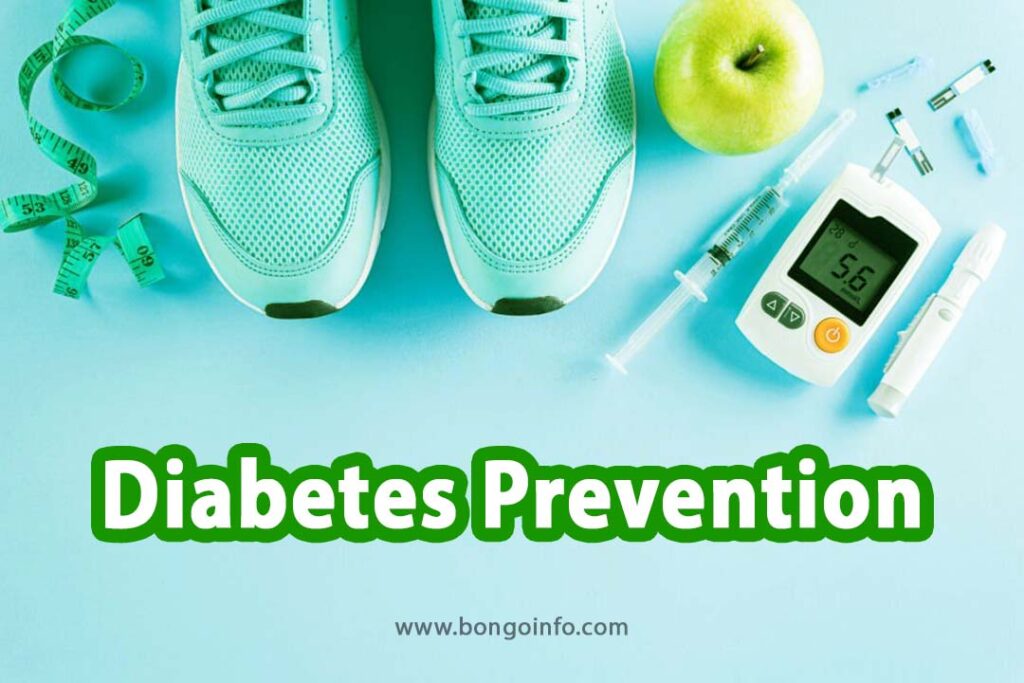Diabetes Prevention: 7 Natural Ways For Taking Control
Diabetes is a chronic medical condition characterized by high levels of sugar in the blood. It can lead to serious complications if left unmanaged, including nerve damage, blindness, kidney disease, and cardiovascular disease. While diabetes can be managed with medication, it is much better to prevent it from occurring in the first place.
There are several ways to prevent diabetes, and many of them involve making simple lifestyle changes. Eating a healthy, balanced diet and engaging in regular physical activity can help reduce the risk of developing type 2 diabetes, the most common form of the disease. Maintaining a healthy weight, avoiding smoking, and limiting alcohol consumption are also important factors in diabetes prevention. Additionally, screening for diabetes and managing other health conditions, such as high blood pressure and high cholesterol, can help reduce the risk of developing the disease. With the right steps and ongoing medical care, it is possible to significantly lower the risk of developing diabetes and enjoy a healthier, more active life.

Start with these 7 tips:
Get more physical activity
Getting more physical activity is a key component of a healthy lifestyle and can help prevent a wide range of chronic diseases, including diabetes. Regular exercise can help improve insulin sensitivity, which means that your body is better able to regulate blood sugar levels. It can also help with weight management and reduce the risk of developing other risk factors for diabetes, such as high blood pressure and high cholesterol.
The American Diabetes Association recommends that adults engage in at least 150 minutes of moderate-intensity aerobic exercise per week, spread out over at least three days. This can include activities such as brisk walking, cycling, or swimming. Additionally, strength training exercises should be done at least two days per week to help build and maintain muscle mass.
It’s important to start slowly and gradually increase your activity level over time, particularly if you are not currently very active. Finding an activity that you enjoy and incorporating it into your daily routine can help you stick with it in the long-term. Remember that any amount of physical activity is better than none, and even small changes can make a big difference in improving your overall health and reducing your risk of developing diabetes.
Lose excess weight
Losing excess weight is one of the most effective ways to prevent and manage diabetes. Being overweight or obese increases the risk of developing type 2 diabetes, and losing just a small amount of weight can significantly lower this risk.
To lose weight, it’s important to create a calorie deficit by consuming fewer calories than you burn through physical activity and your body’s metabolic processes. This can be achieved by reducing portion sizes, choosing healthier foods, and increasing physical activity levels. It’s important to set realistic goals and make sustainable lifestyle changes that can be maintained in the long-term.
Weight loss can be particularly effective when combined with other lifestyle modifications, such as increasing physical activity and improving overall dietary habits. Consulting with a registered dietitian or healthcare provider can provide guidance and support in developing a personalized plan for weight loss and diabetes prevention.
Remember that even small changes can make a big difference. Losing as little as 5-10% of your body weight can have significant health benefits, including reducing the risk of developing diabetes and improving blood sugar control for those who already have the disease.
Get plenty of dietary fiber
Getting plenty of dietary fiber is an important component of a healthy diet and can play a role in preventing diabetes. Fiber is a type of carbohydrate that is not digested by the body, meaning it passes through the digestive system relatively intact. It can help regulate blood sugar levels by slowing the absorption of glucose, which can help prevent spikes and crashes in blood sugar levels.
Foods that are high in fiber include whole grains, fruits, vegetables, nuts, and legumes. It’s recommended that adults aim for at least 25-30 grams of fiber per day, although many people fall short of this goal. Increasing fiber intake can be as simple as choosing whole grain bread instead of white bread, swapping in a piece of fruit for a sugary snack, or adding a serving of vegetables to your meals.
In addition to its benefits for blood sugar control, fiber can also help with weight management and promote overall digestive health. It’s important to increase fiber intake gradually, as a sudden increase can cause gastrointestinal discomfort. Drinking plenty of water can also help with digestion and promote optimal fiber intake.
Aim for 30 minutes
Aiming for 30 minutes of moderate-intensity physical activity per day can have significant health benefits, including reducing the risk of developing diabetes. Regular exercise can help improve insulin sensitivity, which means that your body is better able to regulate blood sugar levels. It can also help with weight management and reduce the risk of developing other risk factors for diabetes, such as high blood pressure and high cholesterol.
Moderate-intensity physical activity includes brisk walking, cycling, swimming, or other activities that get your heart rate up and make you breathe a little harder than normal. Thirty minutes per day can be accumulated in short bouts throughout the day and can be broken down into three 10-minute sessions, for example.
If you are new to physical activity, it’s important to start slowly and gradually increase your activity level over time. Finding an activity that you enjoy and incorporating it into your daily routine can help you stick with it in the long-term. Remember that any amount of physical activity is better than none, and even small changes can make a big difference in improving your overall health and reducing your risk of developing diabetes.
Drink water
Drinking water is an important component of a healthy lifestyle and can help prevent diabetes. Staying well-hydrated can help regulate blood sugar levels, which is important for those who are at risk of developing diabetes or who already have the disease. Drinking water can also promote weight loss and reduce the risk of other chronic diseases, such as heart disease and kidney disease.
The recommended amount of water intake can vary based on age, gender, and activity level. However, a general guideline is to aim for 8-10 cups (64-80 ounces) of water per day. This can come from drinking water, as well as other fluids like herbal tea, broth, or water-rich foods like fruits and vegetables.
It’s important to note that sugary beverages like soda, juice, and sweetened tea can contribute to weight gain and increase the risk of developing diabetes. Drinking water instead of these beverages can be a simple way to reduce overall calorie intake and promote better health. Remember to listen to your body and drink water when you feel thirsty.
Skip fad diets and just make healthier food choices
Skipping fad diets and focusing on making healthier food choices is a more sustainable approach to diabetes prevention and management. Fad diets often promise quick weight loss or other health benefits, but they are usually not sustainable in the long-term and may not provide balanced nutrition.
Making healthier food choices can be as simple as incorporating more fruits and vegetables into your diet, choosing whole grains instead of refined grains, and reducing consumption of added sugars and saturated fats. A well-balanced diet that includes a variety of nutrient-dense foods can help regulate blood sugar levels, promote weight loss, and reduce the risk of other chronic diseases.
It’s important to consult with a registered dietitian or healthcare provider to develop a personalized plan that takes into account individual nutritional needs and preferences. This can help ensure that you are getting all the essential nutrients you need to maintain optimal health. Remember that small changes can make a big difference over time, and it’s never too late to start making healthier food choices to reduce the risk of developing diabetes and other chronic diseases.
Quit smoking
Quitting smoking is a critical component of diabetes prevention and management. Smoking increases the risk of developing type 2 diabetes, and for those who already have diabetes, smoking can make it more difficult to control blood sugar levels and increase the risk of diabetes-related complications.
Nicotine and other chemicals in tobacco can cause insulin resistance, which can make it harder for the body to regulate blood sugar levels. Smoking can also contribute to the development of other risk factors for diabetes, such as high blood pressure and high cholesterol.
Quitting smoking can be challenging, but it’s never too late to quit and start reaping the benefits of better health. The American Diabetes Association recommends using a combination of counseling and medication to quit smoking, which can be more effective than either method alone. Counseling can provide support and guidance, while medications like nicotine replacement therapy or prescription medications can help manage withdrawal symptoms and cravings.
It’s important to seek help from a healthcare provider or smoking cessation specialist to develop a personalized plan for quitting smoking. Remember that quitting smoking can have immediate health benefits, including improved blood sugar control and reduced risk of diabetes-related complications.
Bottom Line
Preventing diabetes requires a comprehensive approach that includes lifestyle modifications such as regular physical activity, maintaining a healthy weight, increasing fiber intake, drinking water, quitting smoking, and making healthier food choices. These strategies can help regulate blood sugar levels, promote weight loss, and reduce the risk of developing other chronic diseases. It’s important to consult with a healthcare provider or registered dietitian to develop a personalized plan that takes into account individual needs and preferences. Remember that small changes can make a big difference over time, and it’s never too late to start taking steps to reduce the risk of developing diabetes and improve overall health.






